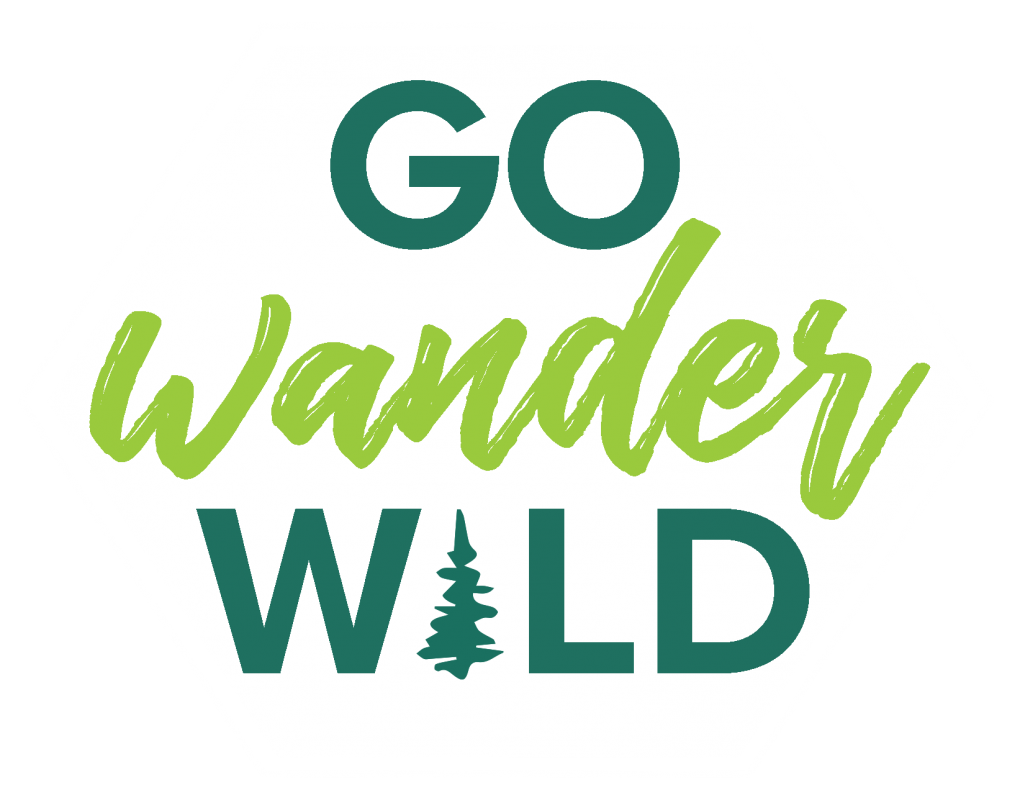We put together this detailed 3 days in Yellowstone itinerary, based on our experience, to help you make the most of your time in this incredible, one-of-a-kind park. Between hikes and scenic drives, you’ll explore geothermal wonders like geysers and hot springs, wildlife, gorgeous scenery, and more.

As the country’s first national park and the second largest in the contiguous U.S. after Death Valley, Yellowstone is truly one-of-a-kind.
This vast national park boasts over 10,000 geothermal features, including bubbling hot springs, steaming geysers, and mud pots, as well as crystal-clear lakes, towering mountain peaks, the longest undammed river in the Lower 48, and an abundance of wildlife.
Our 3 days in Yellowstone itinerary is ideal for experiencing the must-see attractions, giving you ample time to enjoy the park’s highlights without feeling rushed or overwhelmed.
Yellowstone National Park Itinerary Guide
- Yellowstone National Park overview
- Itinerary overview
- How many days
- When to go
- Where to camp
- What to pack

Whether you simply aspire to the visit the parks in your neck of the woods or want to hit them all, be sure to download our FREE national park checklist by clicking below to keep track of your progress!
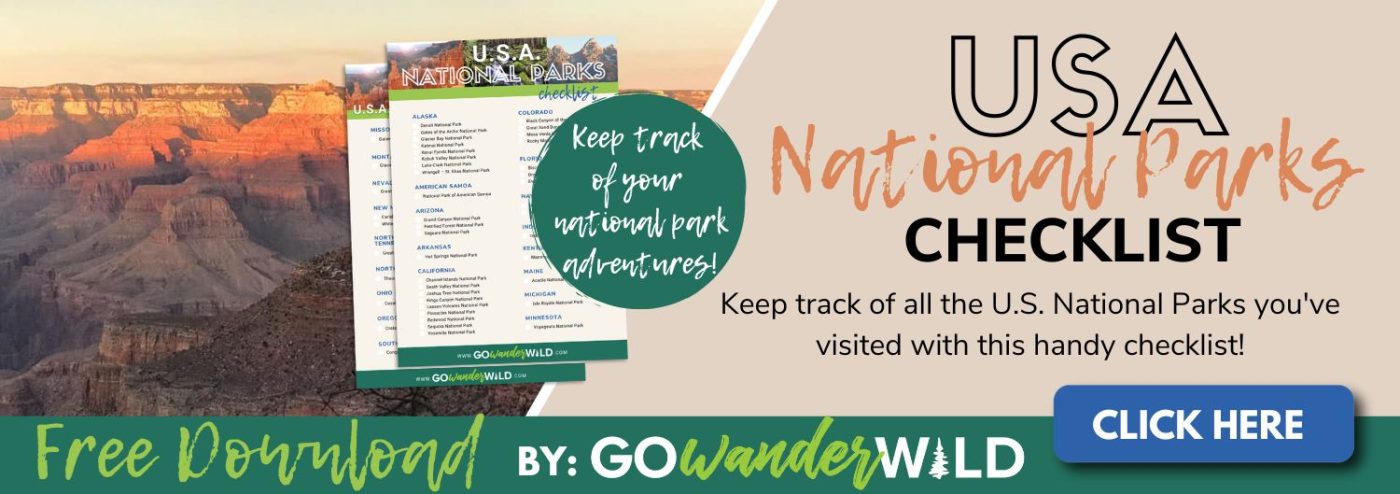

Yellowstone National Park overview
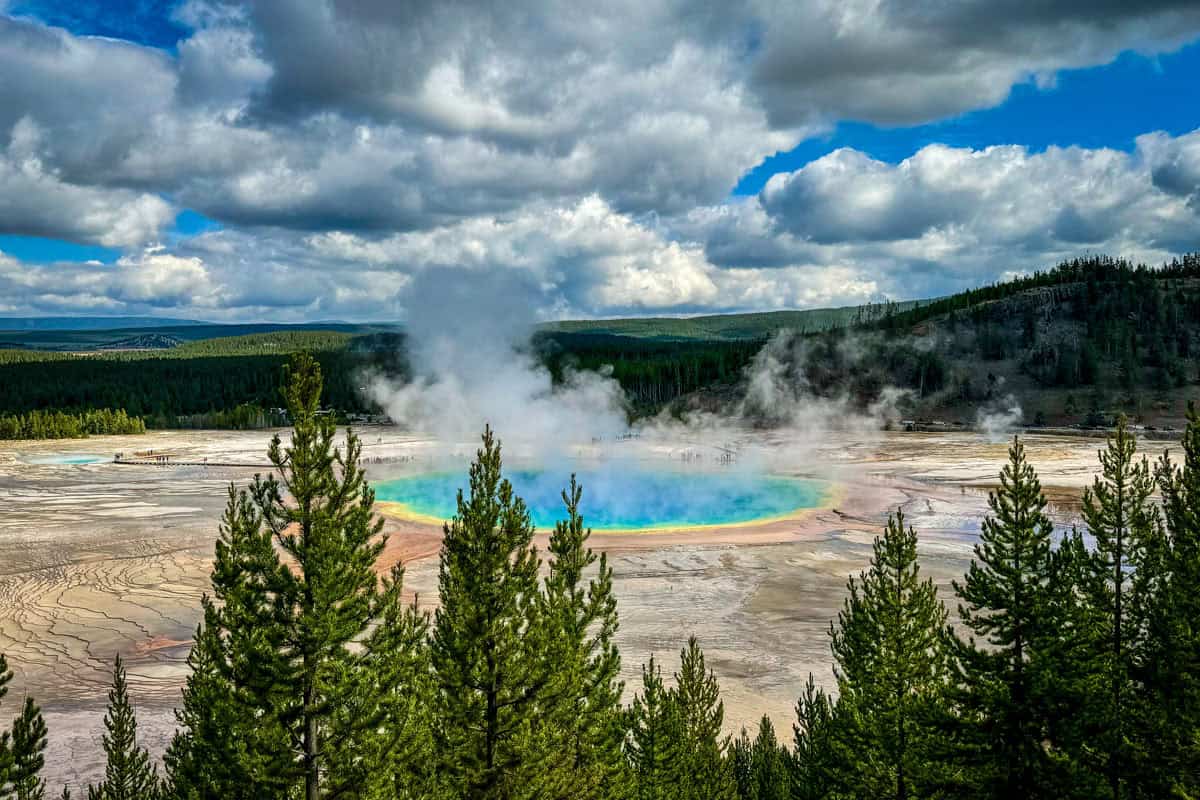
- Open: All year round, but certain areas of the park are only accessible during certain times of the year.
- Entrance Fee: $35/vehicle, $30/motorcycle, $20/hiking & biking or free as part of an annual America the Beautiful Pass
- Established: March 1, 1872
- Area: 2,221,766 acres
The nation’s first national park is a breathtaking natural wonder known for its geothermal features, stunning landscapes, and diverse wildlife.
Spanning over 2.2 million acres, the park is home to iconic attractions like Old Faithful, Grand Prismatic Spring, and the Grand Canyon of the Yellowstone.
Visitors can explore geysers, hot springs, waterfalls, and lush valleys, with opportunities for hiking, wildlife viewing, and scenic drives. With bison, elk, bears, and wolves roaming the park, it’s a haven for nature lovers.
With this 3 day itinerary for Yellowstone, you’ll be able to explore all of the magic this park has in store.
America the Beautiful annual park pass
If you’re planning to visit more than one of the US National Parks, we’d highly encourage you to look into getting an annual park pass. At $35 per vehicle upon entry, visiting the national parks in the U.S. can get expensive.

For just $80 per year, you can purchase the America the Beautiful park pass. This pass grants you free access to all of the national parks. Plus it also covers your entrance to over 2,000 natural, historical, and recreational sites across the United States.
If you still need convincing, check out our article: National Park Annual Pass: Is it Worthwhile? + How to Buy
3 Days in Yellowstone itinerary overview
- Day 1: Grand Canyon of Yellowstone, Point Sublime via Artist Point Trail, Brink of the Lower Falls Trail, Drive the North Rim Drive Loop, Norris Geyser Basin
- Day 2: Midway Geyser Basin, Grand Prismatic Spring, Lower Geyser Basin, Biscuit Basin, Upper Geyser Basin and Old Faithful, West Thumb Geyser Basin
- Day 3: Lamar Valley, Blacktail Plateau Drive, Mammoth Hot Springs, Bunsen Peak Hike
Day 1: Grand Canyon of the Yellowstone and Norris Geyser Basin
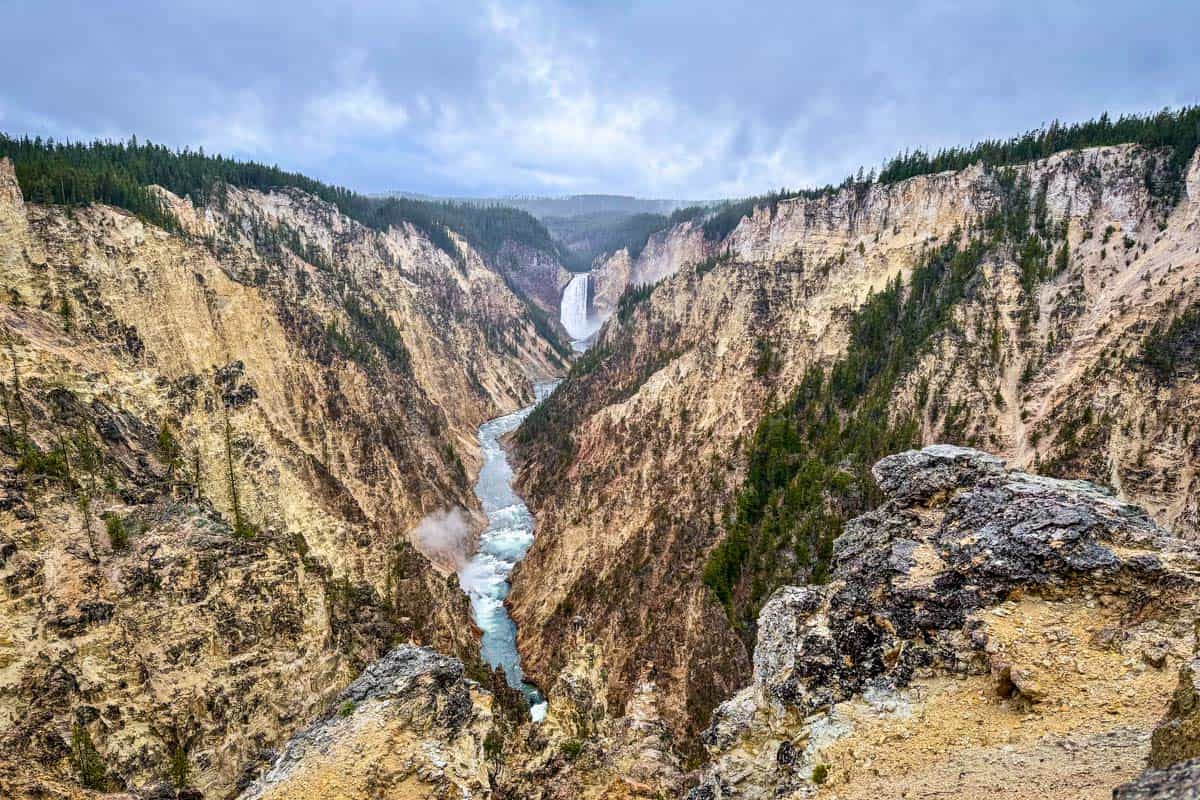
Day one of your Yellowstone National Park itinerary explores the breathtaking “Grand Canyon” of the Yellowstone, as well as one of the most unique geothermal areas (which is really saying something!).
Although the Grand Canyon area is one main site, there’s a lot to do here, with several viewpoints and trails on both the north and south sides of the rim.
You’ll hike along the canyon rim and drive to several spectacular viewpoints, then finish the day wandering through Norris Geyser Basin, one of Yellowstone’s most active.
Point Sublime via Artist Point Trail
- Distance: 2.7 miles, out-and-back
- Elevation gain: 341 ft
- Difficulty rating: moderate
- Trail notes on Alltrails
This easygoing hike takes you from Artist Point to Point Sublime, two of the most iconic overlooks in the park.
Give yourself about an hour and 15 minutes to hike along the canyon’s southern rim, enjoying views that rival—even surpass—those at the official viewpoints. Truthfully, Sublime Point is a bit underwhelming, but the scenery along the way makes up for it.
Despite what the large, busy parking lot suggests, you’ll likely leave the crowds behind once you hit the trail. Most people take in the views from the Artist Point overlook, then leave.
The Artist Point trailhead starts at the east end of the parking lot, and there are vault toilets at the opposite end.
Before heading out, take the short drive (or 25-minute walk) to Upper Falls View, AKA Canyon Overlook. From the parking lot, the overlook is a short walk.
Drive the North Rim Drive Loop
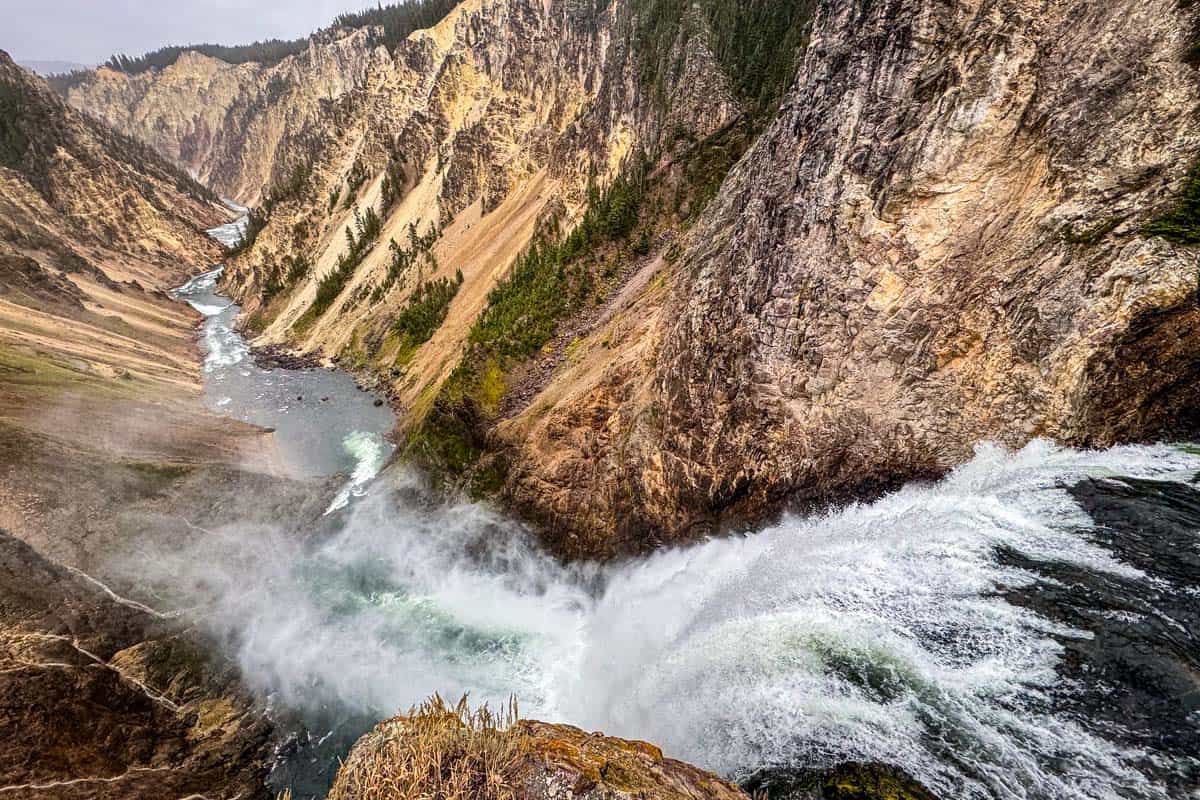
On the canyon’s northern rim, check out the unique perspectives of Lower Falls from several viewpoints: Brink of the Lower Falls (the one hike we definitely recommend here!), Lookout Point, Inspiration Point, and Grand View.
The best way to do this is drive the one-way North Rim Drive Loop, stopping at different overlooks. You can also hike part (or all) of the North Rim Trail, which connects the lookouts via short, steep spur trails.
On a shorter Yellowstone National Park itinerary, driving to the viewpoints saves time, giving you the most bang for your buck.
Brink of the Lower Falls Trail
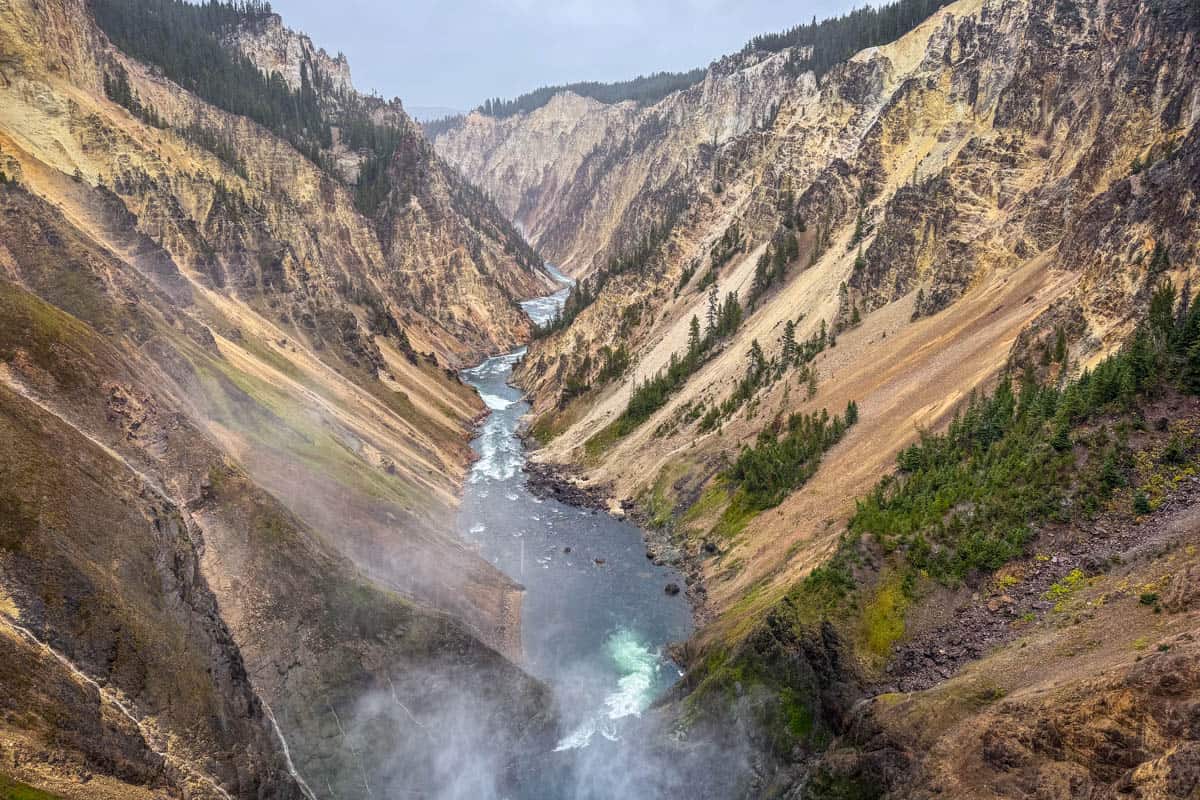
- Distance: 0.7 miles out-and-back
- Elevation gain: 265 ft
- Difficulty rating: Easy
- Trail notes on Alltrails
If you’re set on doing one north rim hike on your 3 days in Yellowstone itinerary, this is it. Park in the Brink of the Lower Falls lot, then allow about one hour for this short but quite steep hike.
The paved trail goes straight down into the canyon, to two viewing platforms. One feels like you are literally standing on the edge of the falls, and the other is just above it.
Norris Geyser Basin
After marveling at the Grand Canyon of the Yellowstone, drive about 25 minutes to Norris Geyser Basin. This is the park’s oldest, hottest, and “most dynamic” geothermal area, with many features changing daily.
Norris Geyser Basin has two main areas, Back Basin and Porcelain Basin. Back Basin is bigger, with a 1.5-mile trail meandering through it, and famous for being home to Steamboat Geyser, the tallest in the world.
Steamboat is constantly active, but full eruptions are unpredictable. When it blows, it spews 300-400 feet in the air, more than double the height of Old Faithful’s eruptions!
Smaller Porcelain Basin has more to see. A .75-mile trail takes you through barren land, by dozens of colorful thermal pools and steaming geysers.
Day 2: Geysers and hot springs
The second day of your Yellowstone itinerary explores the park’s most famous geysers and hot springs. You’ll visit iconic geothermal features and hike through otherworldly basins, ending the day with a classic Old Faithful eruption (it’s a must!).
Grand Prismatic Spring
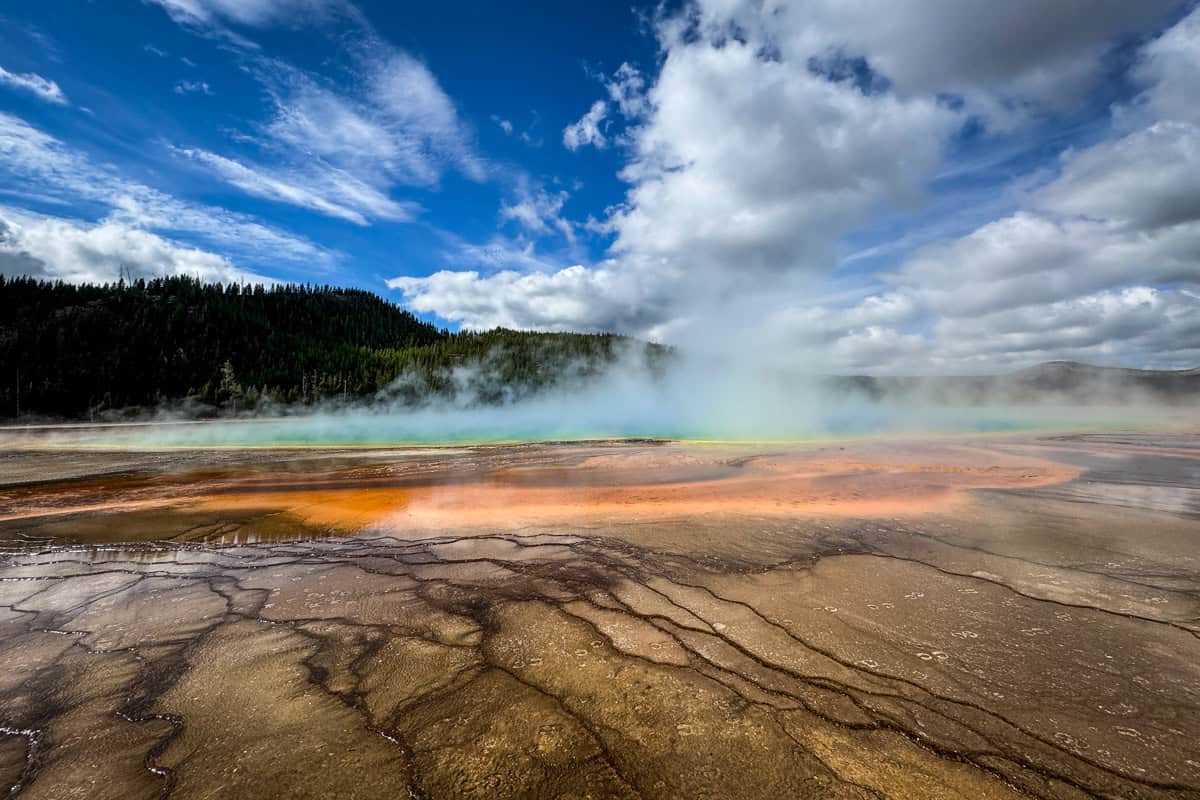
Start the day—as early as possible—at Grand Prismatic Spring, one of Yellowstone’s most recognizable sights. Its vibrant colors and massive size make it a must-see, but the boardwalks get crowded.
For a better view (and fewer people), hike up to the Grand Prismatic Overlook. It’s only 1.5 miles round trip, starting from the Fairy Falls Trailhead.
Insider tip: If you can’t get to Grand Prismatic first thing, save it for later in the day. Not only will some of the crowds have cleared out, but the perpetual morning fog will likely have lifted, too.
Midway Geyser Basin
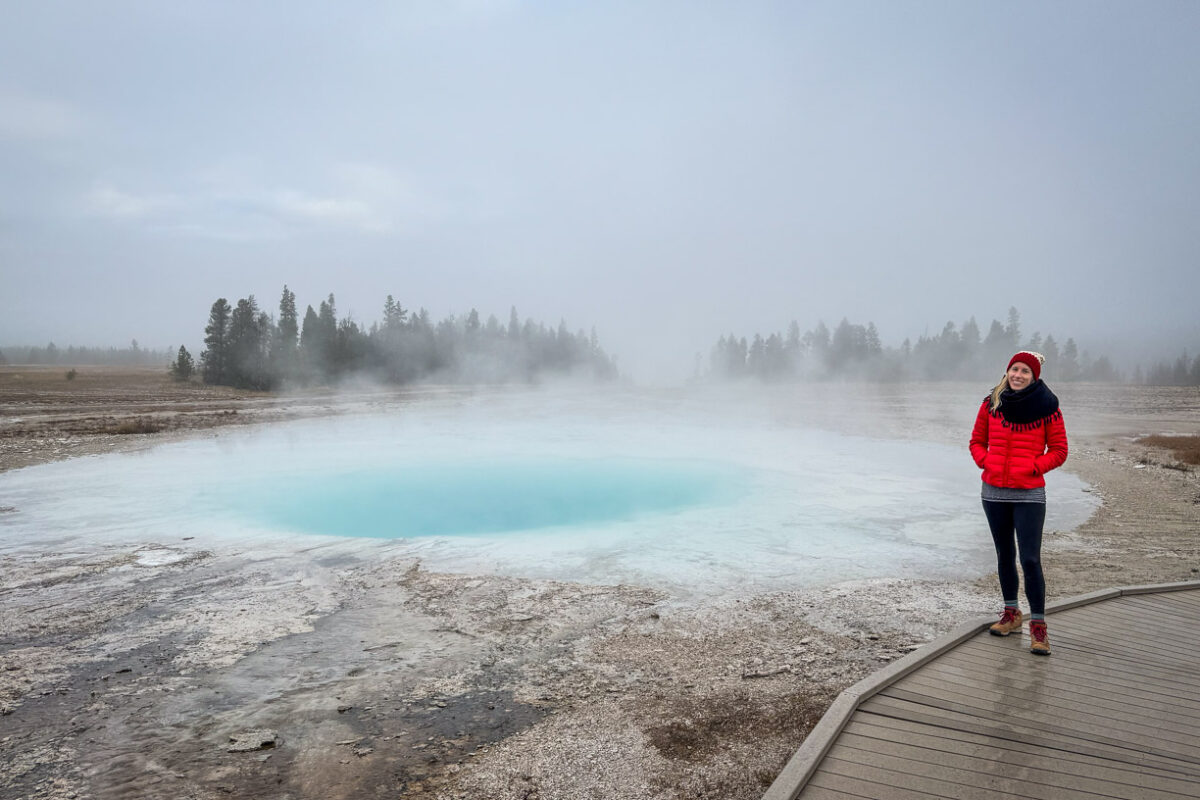
Although physically small, Midway Geyser Basin has two of the largest hydrothermal features in Yellowstone: Grand Prismatic Spring and Excelsior Geyser. Excelsior is incredibly active, pumping over 4,000 gallons of hot water into the Firehole River each minute.
If you add the 0.7-mile boardwalk path to your Yellowstone itinerary, you’ll walk right by both, as well as Turquoise Pool.
Lower Geyser Basin
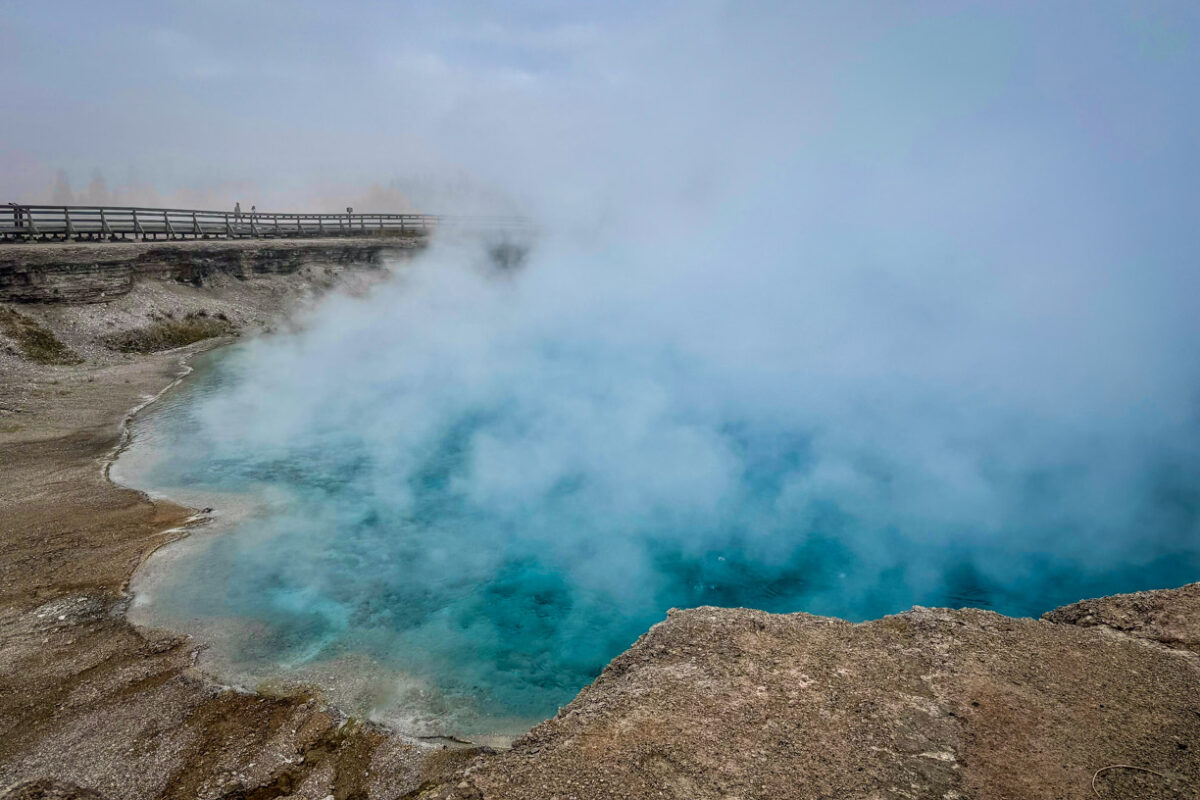
Next, head to the largest geyser basin in Yellowstone, as well as one of the most diverse. This area is home to bubbling mudpots, peacock-colored springs, and erupting geysers.
Before heading out on some short hikes, explore Firehole Lake Drive. The 2-mile, one-way loop takes you past unique cone and dome geysers, and to one of the most spectacular, predictable geysers in the park, Great Fountain Geyser. It erupts every 10-14 hours.
Fountain Paint Pots Trail
- Distance: 0.6-mile loop
- Elevation gain: 22 ft
- Difficulty rating: easy
- Trail notes on Alltrails
This short, sweet boardwalk ‘hike’ offers lots of bang for the buck, showcasing every type of hydrothermal feature: mudpots, steaming fumaroles, geysers, and hot springs. It’s easy, but there are some stairs and a couple of steep sections.
Biscuit Basin
Because of its proximity to Old Faithful, Biscuit Basin often gets overlooked on a 3 days in Yellowstone itinerary. However, this smaller gem is well worth a quick stop, with several geysers, super colorful pools, and one particularly great hike (see below).
Mystic Falls, Fairy Creek & Little Firehole Loop
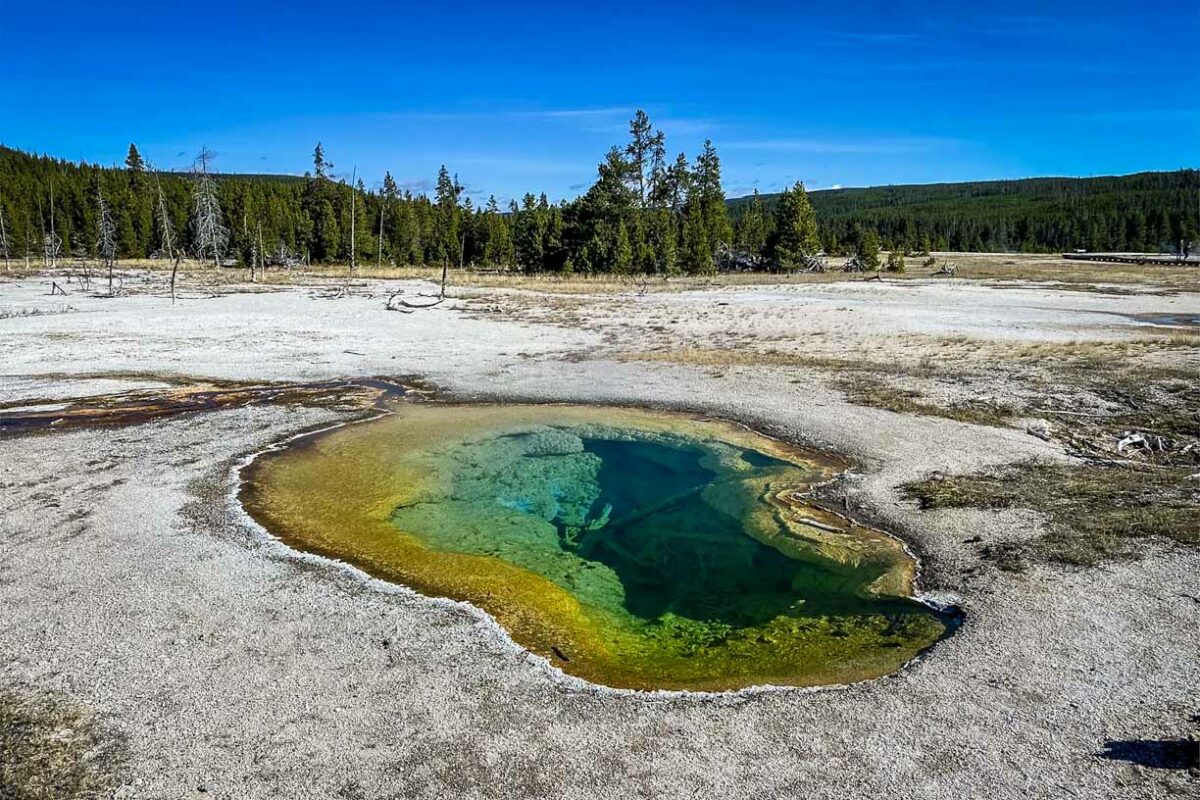
- Distance: 3.5-mile loop
- Elevation gain: 606 ft
- Difficulty rating: moderate
- Trail notes on Alltrails
This scenic trail takes you through the forest and past geysers, up to Biscuit Basin Overlook and 70-foot Mystic Falls. Most of it is easy-going, but there are some steep switchbacks. If you time it right, you can even see Old Faithful erupting from the overlook!
You can start this hike from the Biscuit Basin parking lot or walk over from Old Faithful on the Artemisia Trail.
Upper Geyser Basin and Old Faithful
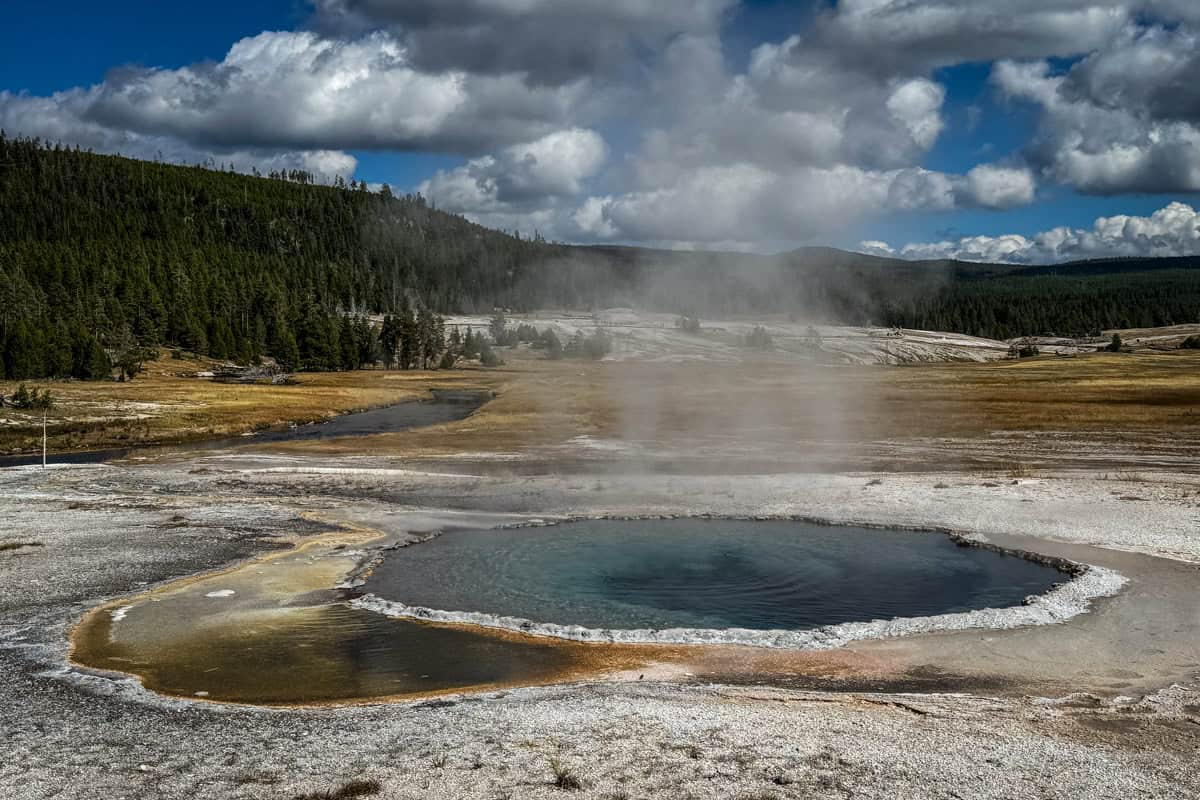
Upper Geyser Basin is home to the famous Old Faithful and Morning Glory Pool, but it also has the highest concentration of geysers in the entire world, with some of the biggest.
With that said, it’s important to note that the vast majority of geysers here do not erupt on any sort of predictable schedule. It’s a fascinating area, but doesn’t have as much consistent action as many other basins in the park.
Stop by the Old Faithful Visitor Center first, so you can check that day’s predicted eruption times for a handful of geysers.
Old Faithful
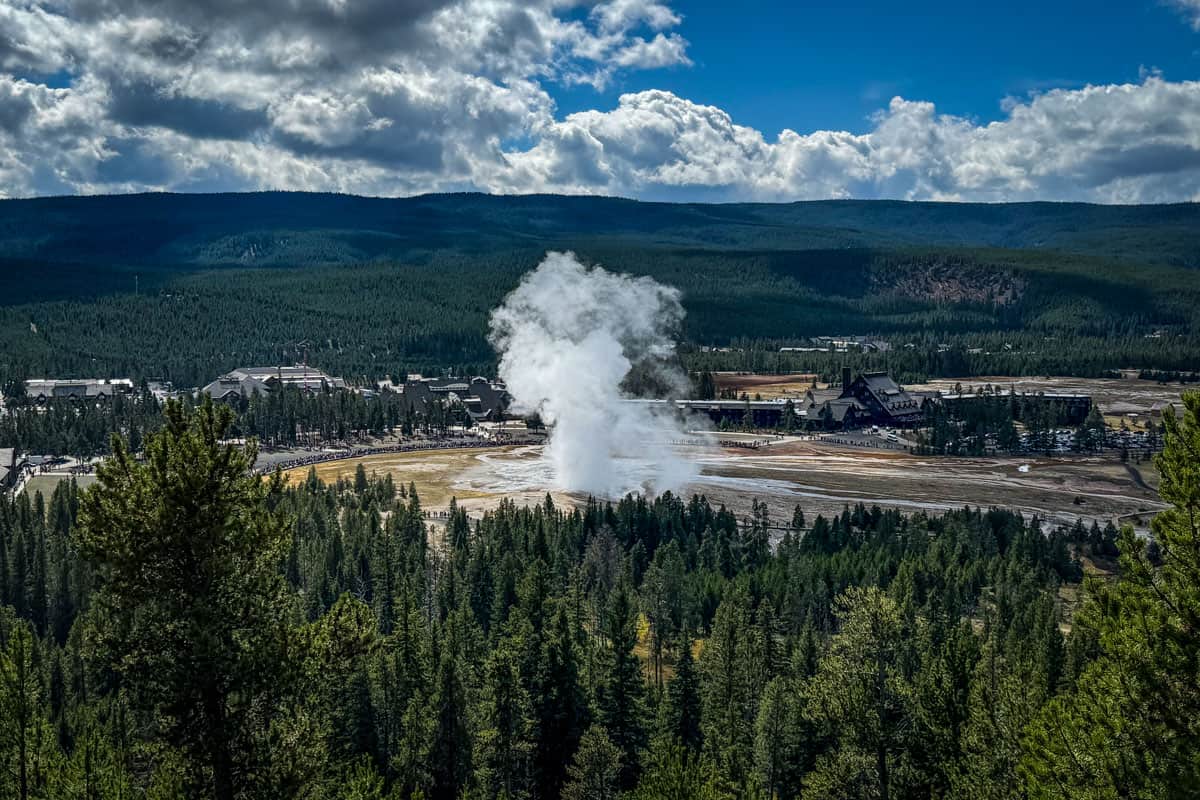
Arguably the most iconic feature in Yellowstone, aptly-named Old Faithful erupts on a predictable schedule, putting on 1-5 minute shows up to 20 times a day. Watching it is a must, and constant crowds at the viewing area prove that everyone has the same idea.
To get away from (some of) the crowds, walk the Upper Geyser Basin and Old Faithful Observation Point Loop. The easy 5-mile boardwalk path circles hundreds of geysers and pools, with countless photo ops along the way.
West Thumb Geyser Basin Trail
- Distance: 1-mile loop
- Elevation gain: 62 ft
- Difficulty rating: easy
- Trail notes on Alltrails
A quiet, underrated area, West Thumb sits on the shores of Yellowstone Lake. Although it doesn’t have any volatile geysers, you’ll find plenty of stunning features here…and no crowds!
The easy boardwalk trail divides the basin into two areas, forming a double loop around several pools. Some of the most interesting include Abyss Pool, Collapsing Pool, Fishing Cone, and Blue Funnel Spring.
Day 3: Mammoth Hot Springs and Lamar Valley
Your 3 day itinerary for Yellowstone ends in the park’s northern section, including otherworldly Mammoth Hot Springs and Lamar Valley, one of the best areas for spotting wildlife.
Mammoth Hot Springs
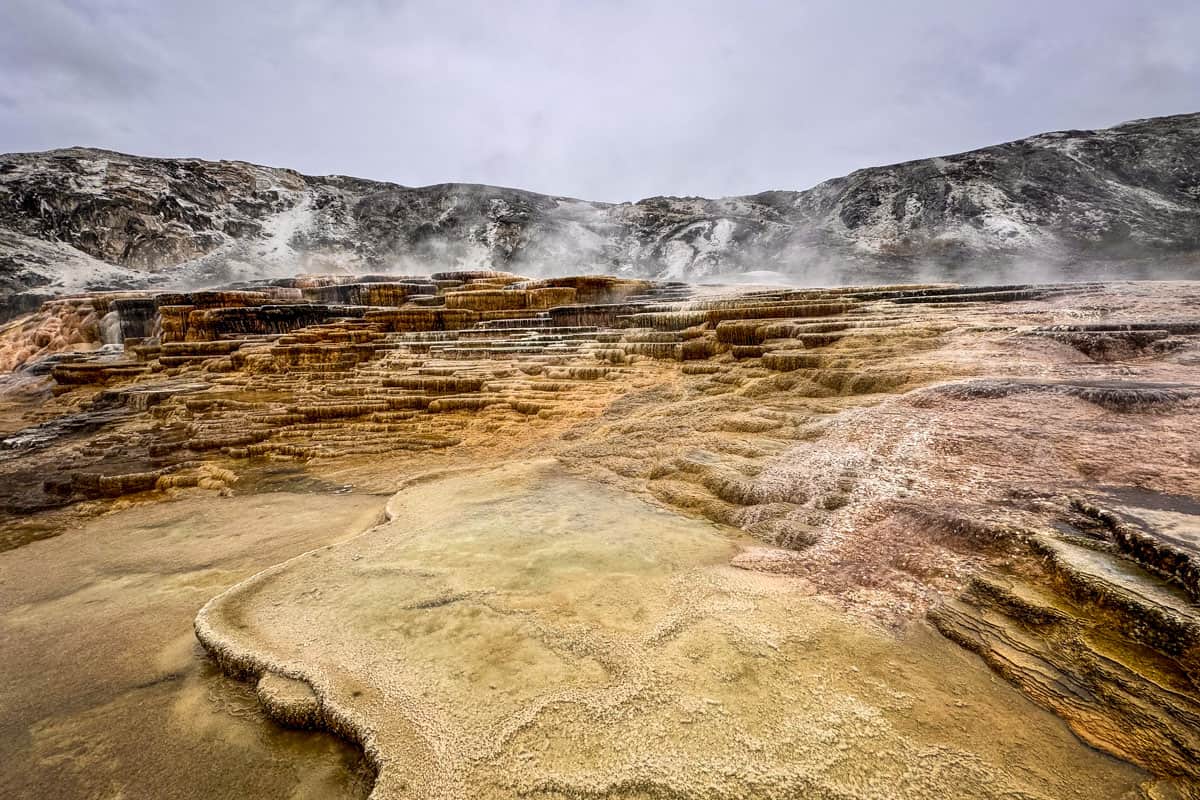
This is a great place to start your day, especially if you catch sunrise from Canary Spring. The viewing platform is at the terraces’ high point, giving you a great vantage point.
Because the iconic travertine terraces are so active, their colors and overall appearance change constantly. They’re always milky, opalescent white, but you may also see neons and pastels. You can visit several times and never have the same experience!
Mammoth Terraces Trail
- Distance: 2.5 miles out-and-back
- Elevation gain: 383 feet elevation gain
- Difficulty rating: Easy
- Trail notes on Alltrails
After enjoying some tranquility and early morning views, take this short, fairly easy hike (budget about 1.5 hours). The trail is a series of boardwalks and paved pathways, but there are also stairs and steep sections.
You’ll pass more than a dozen springs, but some highlights include Opal Terrace, Palette Spring, Liberty Cap, and Canary Spring.
Lamar Valley
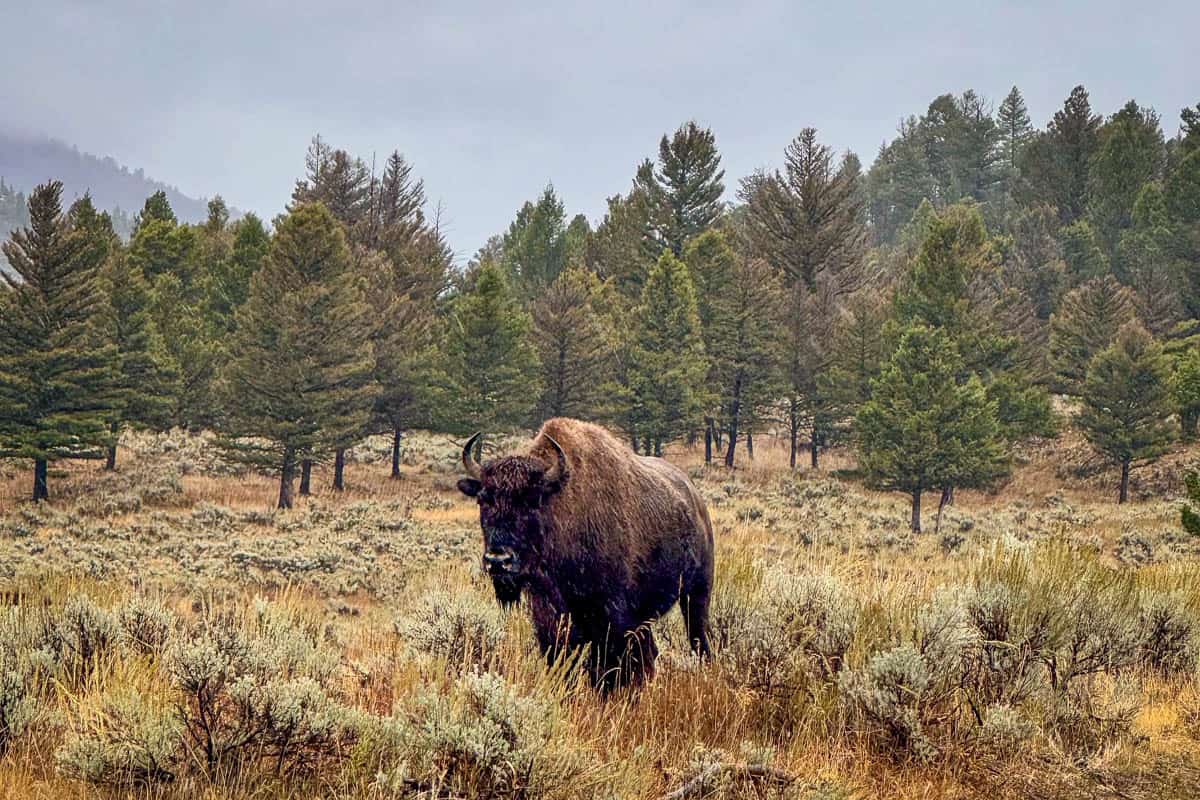
Some people don’t even include Lamar Valley on their Yellowstone itinerary, but it’s a must for wildlife enthusiasts. Photographers flock here year-round, hoping to spot bison, elk, bears, antelope, and wolves. For the best odds of seeing animals, arrive during golden hour.
You can watch from your vehicle (look for photographers with tripods and spotting scopes set up!), or, if you prefer to explore on foot, hit the Lamar Valley Trail.
It’s an easy walk through prime wildlife territory, and the chance of getting caught in a bison ‘traffic jam’ is extremely high! The trail is seven miles round-trip, but there’s no summit, so turn back whenever you’d like.
Bunsen Peak Hike
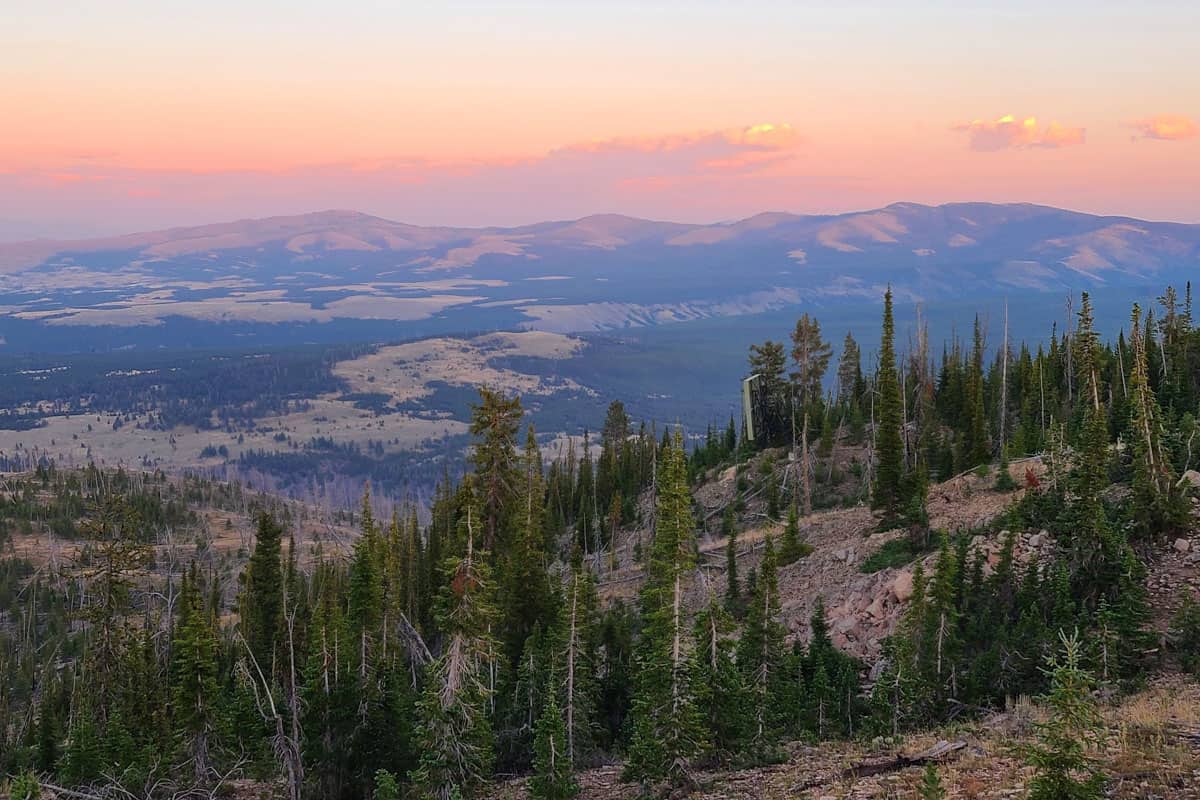
- Distance: 4.4 miles, out-and-back
- Elevation gain: 1,282 feet
- Difficulty rating: Moderate
- Trail notes on Alltrails
Wrap up your day by making your way back towards Mammoth Hot Springs for a sunset hike up Bunsen Peak. The trail climbs uphill the entire way to the summit and you’ll have to navigate loose rock near the top, but it’s manageable even for casual hikers. And the panoramic views from the summit over the park are well worth it!
Find the trailhead in the Glen Creek Trailhead parking lot, about five miles south of Mammoth Hot Springs just past the Golden Gate Bridge Park.
Allow 2-4 hours, depending on your hiking pace. This is bear country so carry bear spray and be aware of your surroundings!
How much time do I need in Yellowstone National Park?
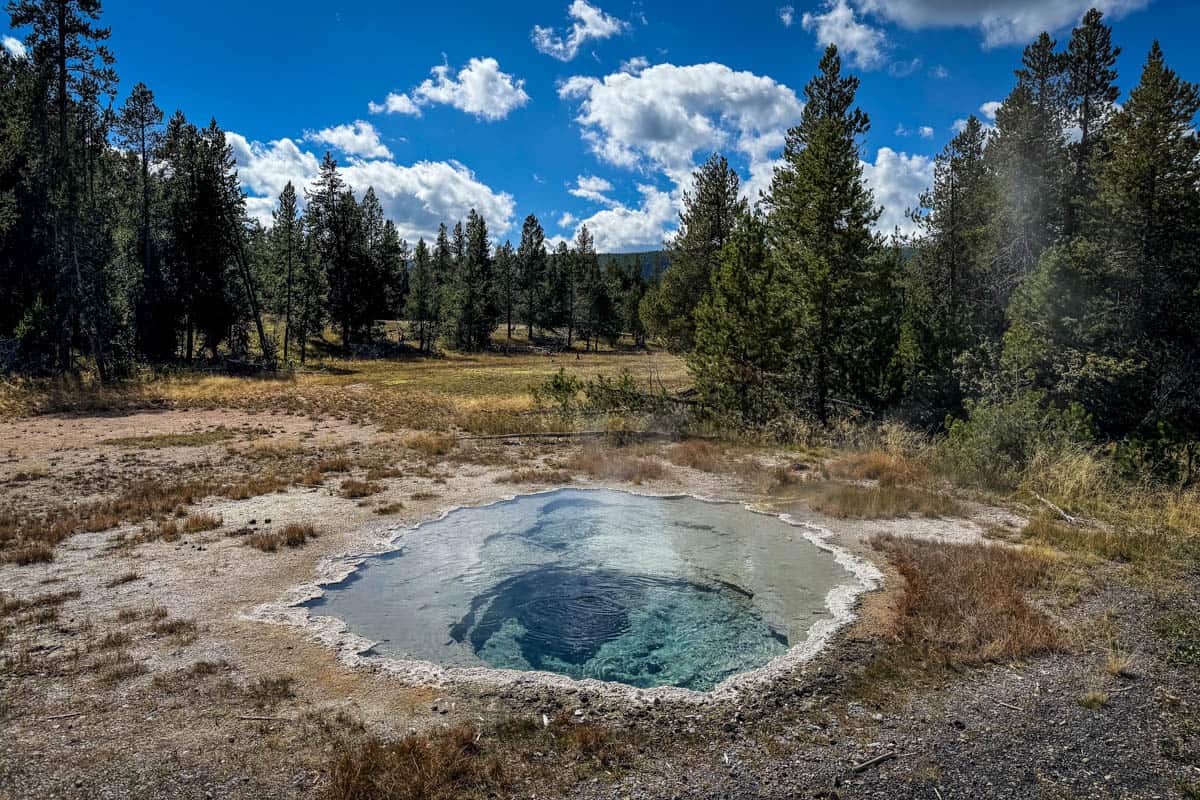
We think spending 3 days in Yellowstone is the perfect amount of time, particularly for those visiting for the first time.
This timeframe strikes a good balance between experiencing iconic sights such as Old Faithful and Mammoth Hot Springs, while also providing ample opportunity to explore less crowded spots at a relaxed pace.
Given the sheer size of Yellowstone National Park, a shorter itinerary would likely require you to miss out on entire regions or significant attractions.
Best time to visit Yellowstone National Park

Our personal belief is that fall is the best time to visit this incredibly popular park, particularly after schools have resumed.
From mid-September to early October, summer crowds begin to dwindle, allowing for a more enjoyable experience of the park’s highlights without the hassle of large crowds or a rushed atmosphere.
The weather during this period is cooler yet still pleasant, and the changing leaves enhance the park’s beauty. Additionally, wildlife tends to be more active during this season.
If you’re planning a 3 day itinerary for Yellowstone outside of summer or early fall, be aware that much of the park becomes inaccessible as many roads are closed for the season from mid-October through April (and sometimes into May).
Winter activities such as snowshoeing, cross-country skiing, and guided snowmobile tours are part of the experience of a Yellowstone winter, and wildlife viewing against a snowy landscape is truly remarkable.
Psst! Did you know Yellowstone is one of the best national parks to visit in winter?
Where to camp at Yellowstone National Park

Yellowstone has 12 campgrounds. Nearly all accommodate tents and RVs, though they vary significantly in amenities. Some campgrounds have showers and flush toilets, for example, while others have vault toilets.
Advance reservations are required for all campgrounds, with the exception of Mammoth Campground in the winter. Between October 15 and April 1, the campground allows first-come, first-served camping.
For full hookups, Fishing Bridge RV Park is the only option.
What to pack for your Yellowstone National Park itinerary

- Navigation: we recommend using Alltrails+ to download the offline trail map
- Get your first week of using Alltrails+ for FREE when you sign up using our link!
- Hiking daypack
- Water bottles and/or bladder for your Camelbak
- Bug repellant
- Sun protection: sunscreen, hat, sun glasses
- Headlamp
- Camera/tripod (this one’s our favorite for hiking)
- Hiking layers (here is a great resource if you’re wondering what to wear hiking)
- Rain jacket
- Comfortable hiking boots or shoes
- Hiking poles (optional)
- Bear spray (just in case)
- Plenty of snacks: check out our favorite hiking snacks here!
- Camping gear – if you are staying at one of the park’s campsites

Other Yellowstone National Park itineraries
- 4 Day Grand Teton to Yellowstone Itinerary: We think the best way to discover the heartland of the national park system is by road trip. In this article, we’ve outlined the perfect 4 day Grand Teton to Yellowstone itinerary that brings you to all the best sites, with 2 days in each park.
- 5 Day Glacier National Park to Yellowstone Itinerary: This 5 day itinerary takes you from Glacier National Park to Yellowstone, with 2 adventure-filled days in each park. This guide details the highlights, plus important things to know.
You may also like…
- Best Hikes in Yellowstone National Park
- USA National Park Checklist & Guide
- Best National Parks on the West Coast & Western US
- Best National Parks to Visit in Winter
Save this article on Pinterest for later!
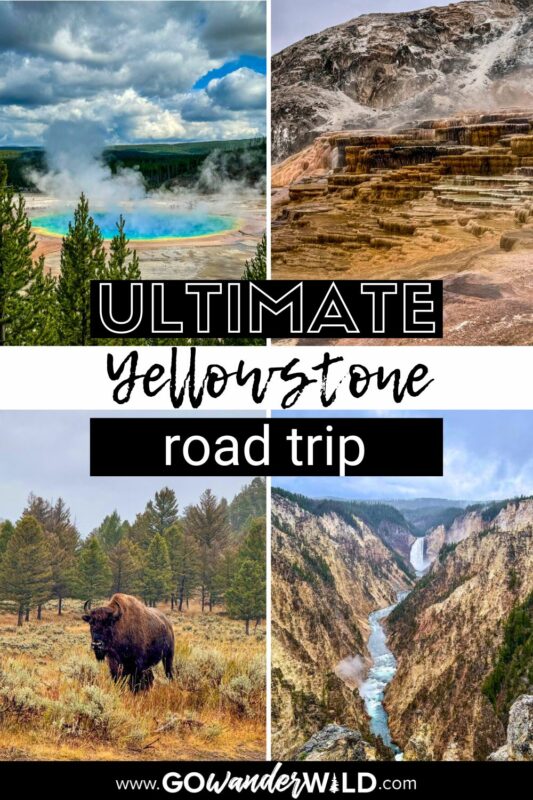
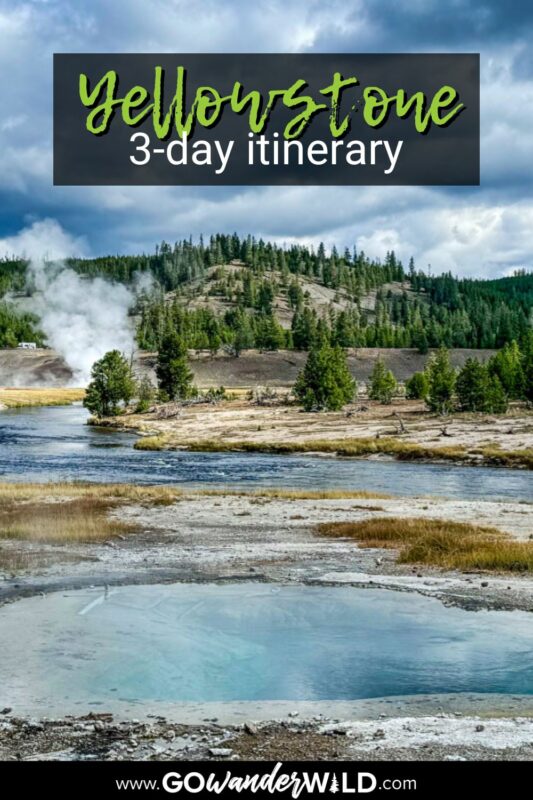
We want to hear from you!
What do you think of our 3 days in Yellowstone itinerary? Are you planning a trip to Yellowstone and still have questions? Comment below and we’ll do our best to get back to you!

